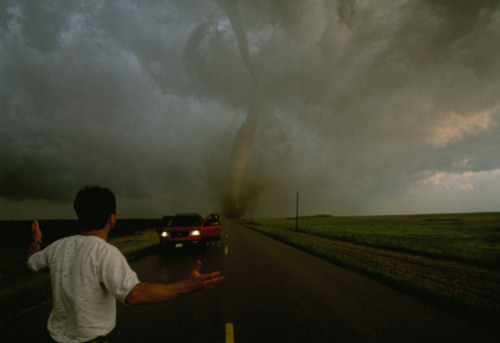Sometimes You Run Into Something That Just Overturns Your Understanding And Builds A New, More Coherent
sometimes you run into something that just overturns your understanding and builds a new, more coherent picture. this is one of them.
they taught us about diffraction theory at uni - Fresnel, Fraunhofer all of that, we did experiments with lasers - but it never occurred to me to analyse lenses in terms of diffraction. it makes so much sense now! i was never entirely satisfied by the ray approximation to light, so seeing what's really going on in the lightfield and how you can use a diffraction plate as a lens, with each ring contributing higher order Fourier terms to the image, is like. crazy cool.
More Posts from Electrolumen and Others
Warm yourself by the fire, NASA style!
Look no further than this cozy and relaxing fireplace – complete with four RS-25 rocket engines to fill your hearth with light. (And 8.8 million pounds of thrust to power your party to the Moon.)


An F4 category tornado bears down on storm chaser Tim Samaras, Carsten Peter.


The first simulated image of a black hole was calculated with an IBM 7040 computer using 1960 punch cards and hand-plotted by French astrophysicist Jean-Pierre Luminet in 1978.


So happy to finally share this shot with you: a conjunction of the ISS and the moon. This shot required meticulous planning and precise timing to achieve, and the full image (in the second post in the thread) is one of my all-time favorites. CR:AM


Awwweeee 🥹💖💖💖 I am so glad I met you!
reblog if you've made a good friend on tumblr.
-
 entoneon liked this · 1 month ago
entoneon liked this · 1 month ago -
 blurrycartoon liked this · 1 month ago
blurrycartoon liked this · 1 month ago -
 two-microscopes liked this · 1 year ago
two-microscopes liked this · 1 year ago -
 aphobothymia liked this · 1 year ago
aphobothymia liked this · 1 year ago -
 electrolumen reblogged this · 1 year ago
electrolumen reblogged this · 1 year ago -
 electrolumen liked this · 1 year ago
electrolumen liked this · 1 year ago -
 le-blanc-et-la-noire liked this · 1 year ago
le-blanc-et-la-noire liked this · 1 year ago -
 junypr-camus liked this · 1 year ago
junypr-camus liked this · 1 year ago -
 correlation-zone reblogged this · 1 year ago
correlation-zone reblogged this · 1 year ago -
 correlation-zone liked this · 1 year ago
correlation-zone liked this · 1 year ago -
 thinkmeatmarinades liked this · 1 year ago
thinkmeatmarinades liked this · 1 year ago -
 annalithic reblogged this · 1 year ago
annalithic reblogged this · 1 year ago -
 annalithic liked this · 1 year ago
annalithic liked this · 1 year ago -
 gay-debord liked this · 1 year ago
gay-debord liked this · 1 year ago -
 itsgerges liked this · 1 year ago
itsgerges liked this · 1 year ago -
 manythingsarewrong liked this · 1 year ago
manythingsarewrong liked this · 1 year ago -
 fem-cassidy liked this · 1 year ago
fem-cassidy liked this · 1 year ago -
 anarchistserum liked this · 1 year ago
anarchistserum liked this · 1 year ago -
 madboiimurder liked this · 1 year ago
madboiimurder liked this · 1 year ago -
 kernalphage liked this · 1 year ago
kernalphage liked this · 1 year ago -
 rainsoftenings liked this · 1 year ago
rainsoftenings liked this · 1 year ago -
 autumnsphinx liked this · 1 year ago
autumnsphinx liked this · 1 year ago -
 xltl reblogged this · 1 year ago
xltl reblogged this · 1 year ago -
 xltl liked this · 1 year ago
xltl liked this · 1 year ago -
 canmom reblogged this · 1 year ago
canmom reblogged this · 1 year ago

23 / Serbia / electrical engineering / photonics / I really like Ruan Mei
124 posts